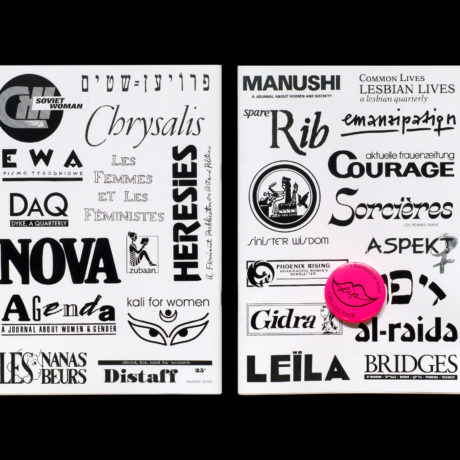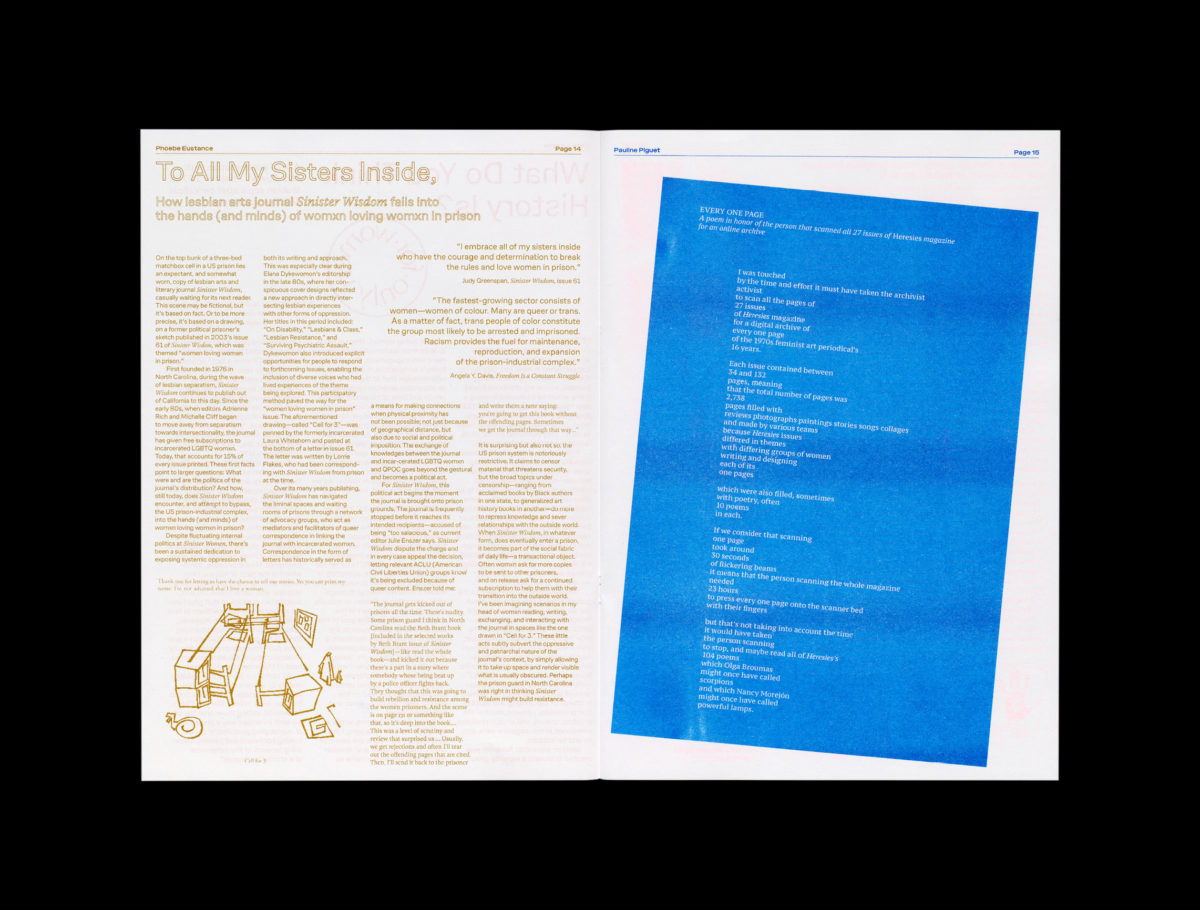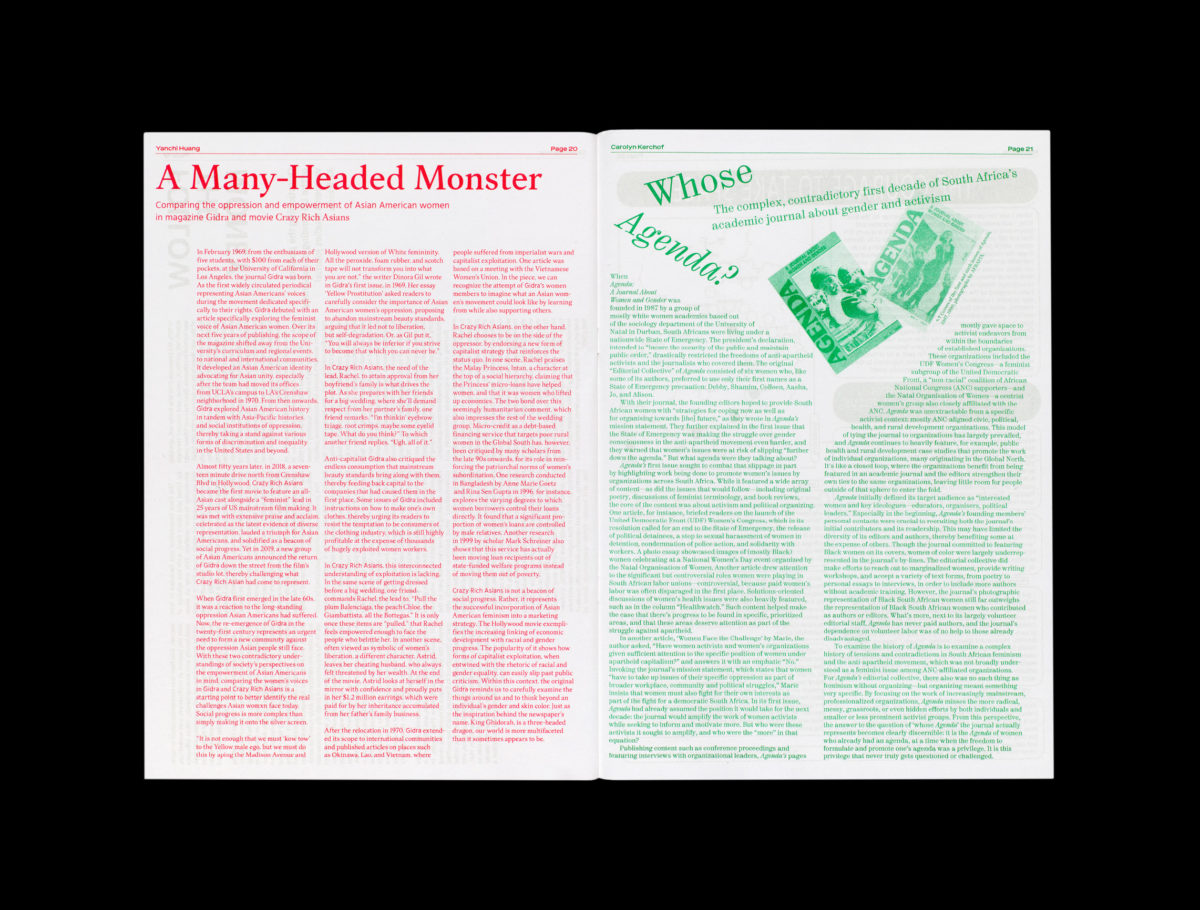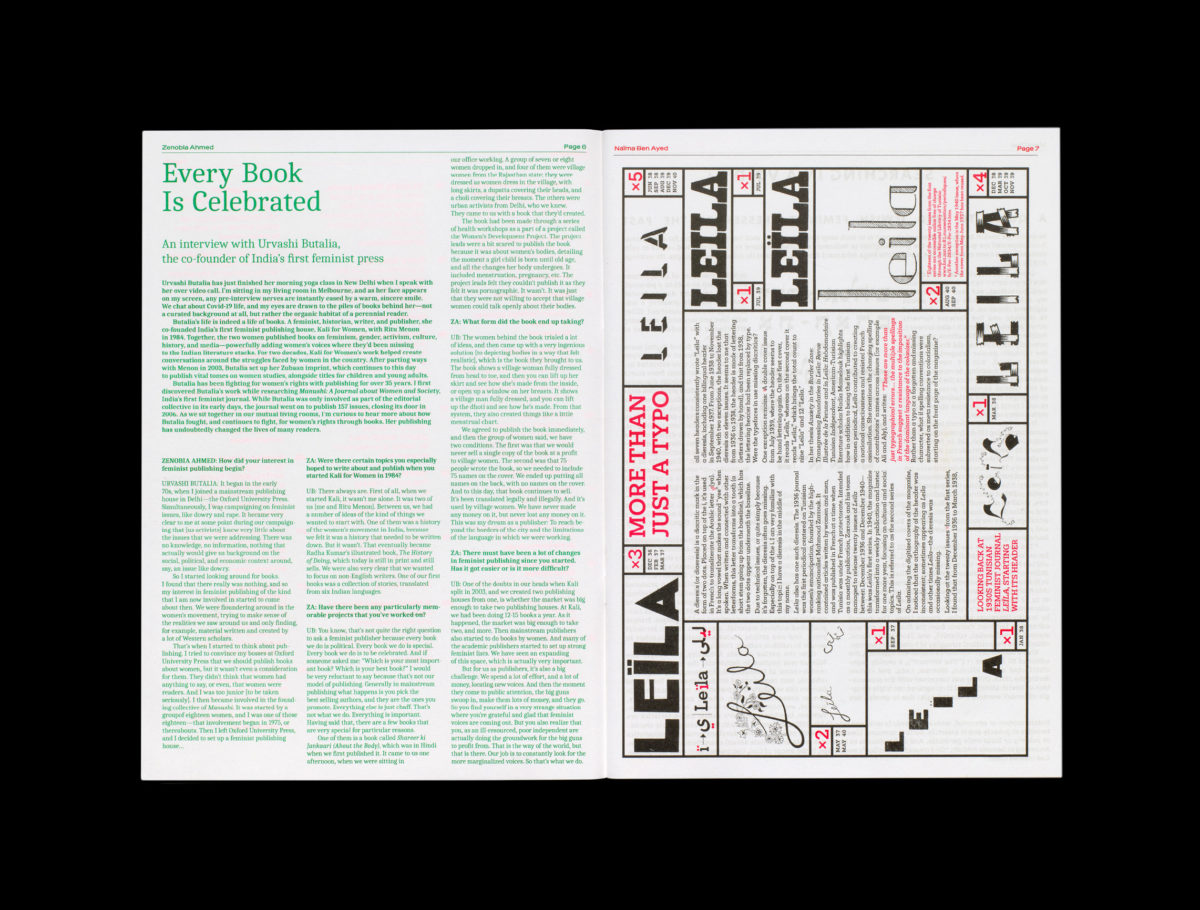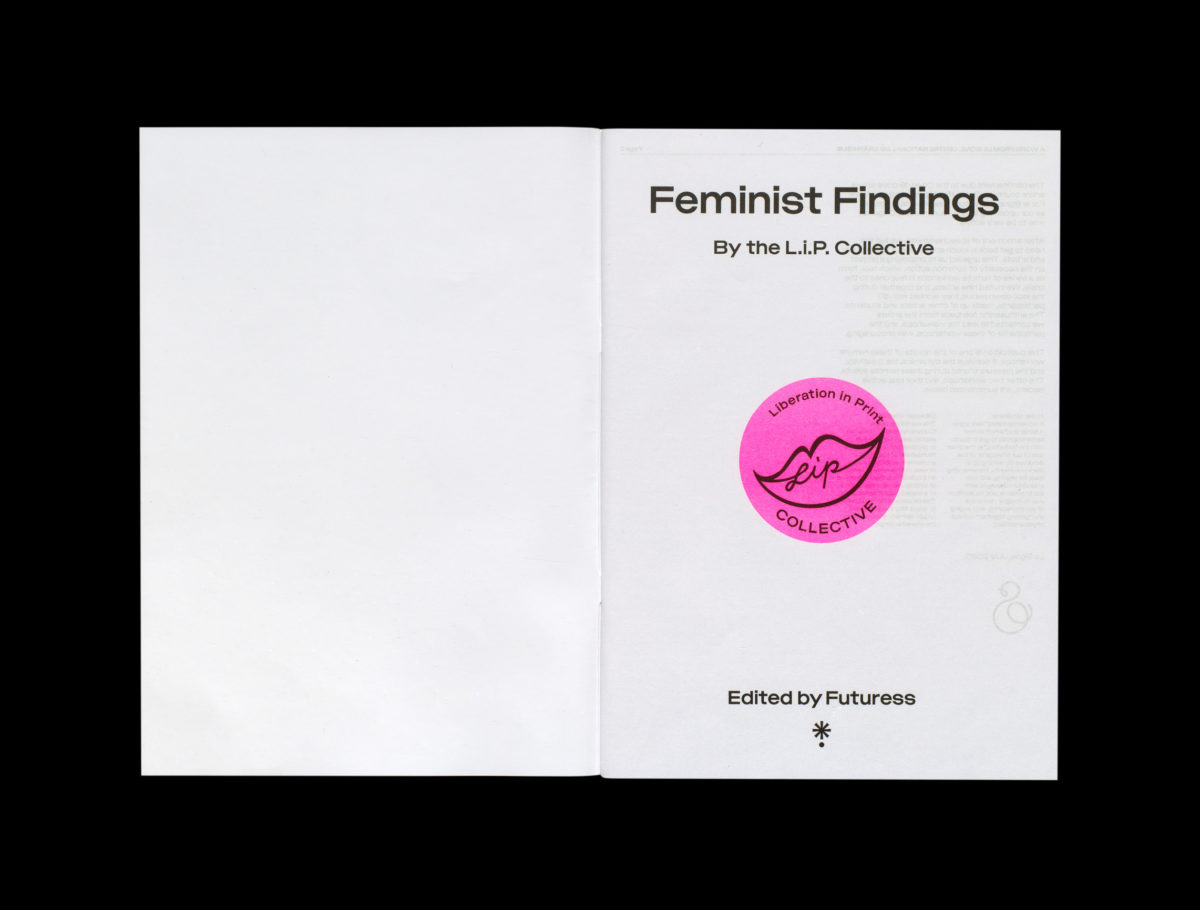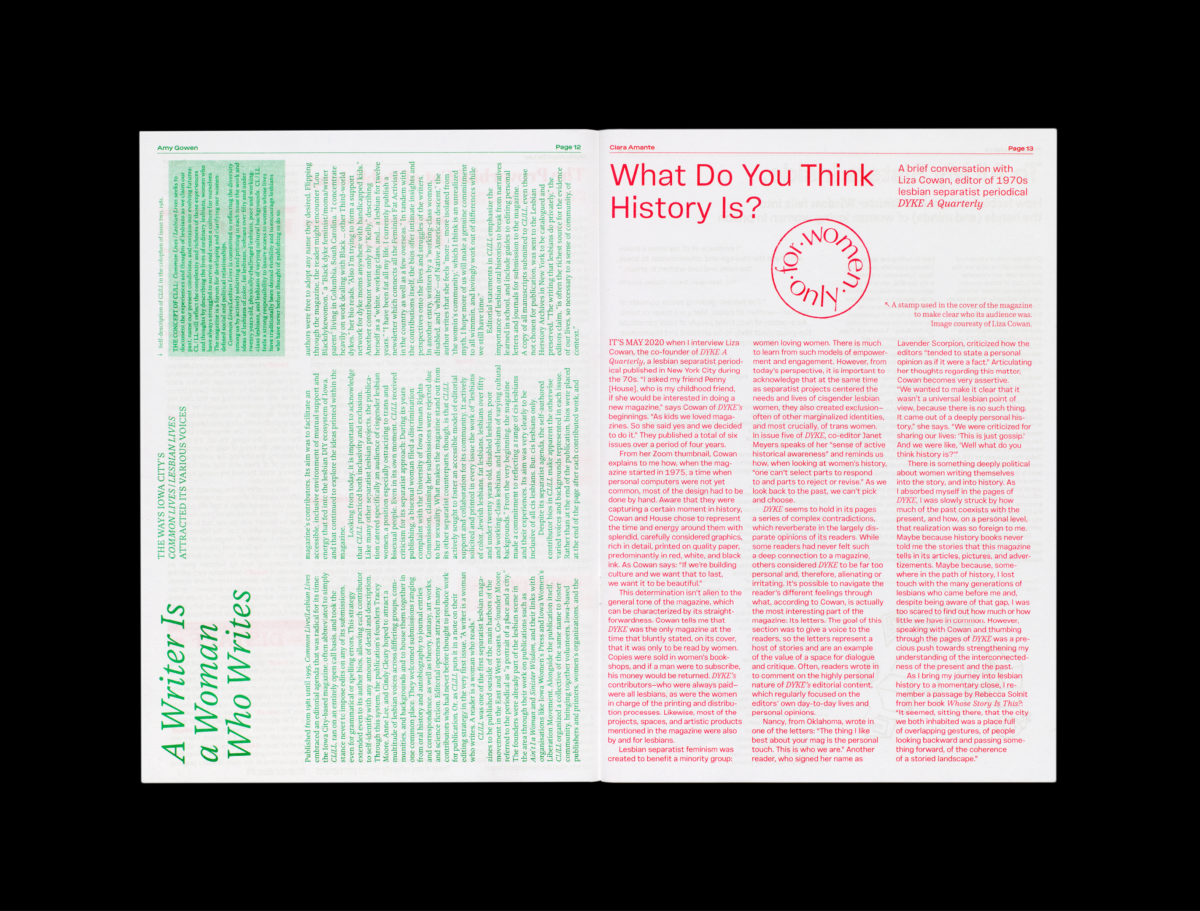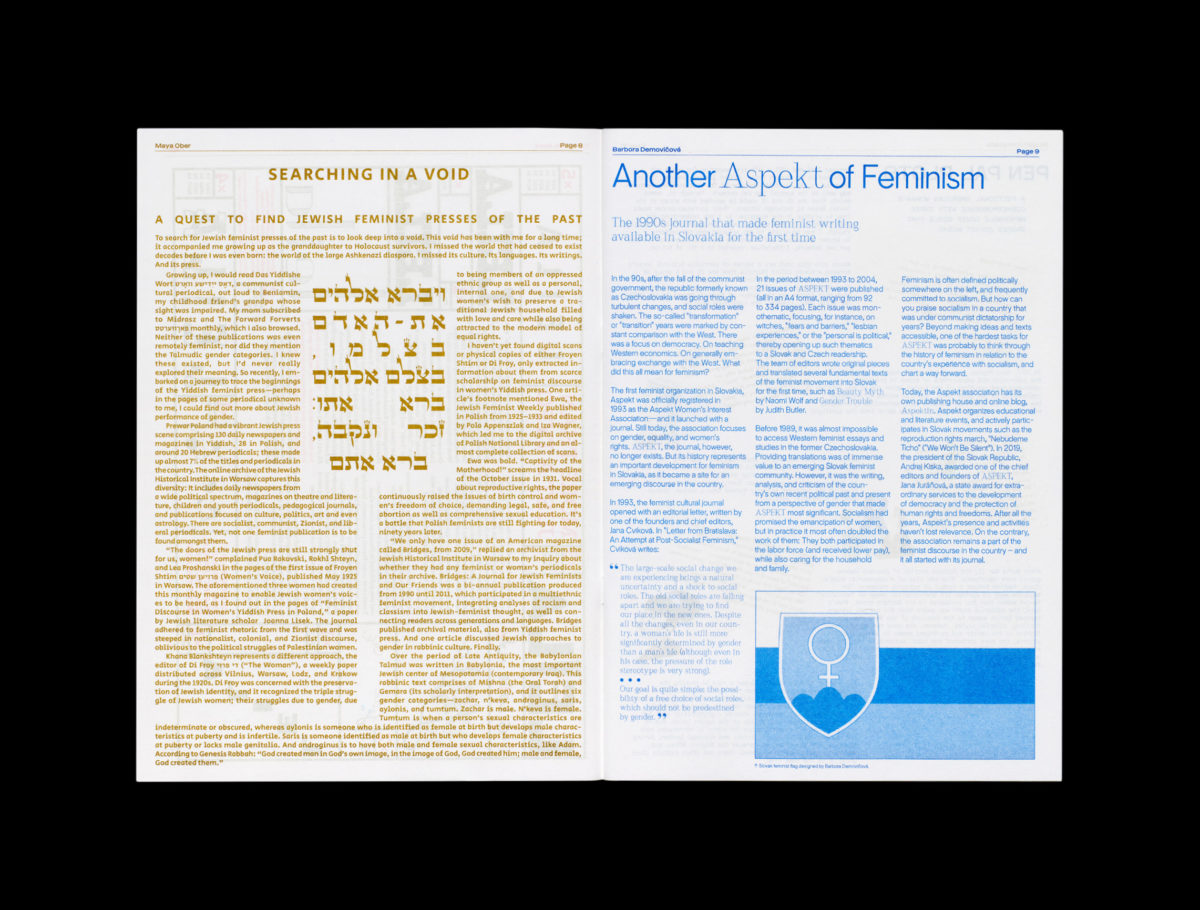
What Is Feminist Findings?
The Feminist Findings zine and its accompanying exhibition of the same name, which was on show at Berlin’s A—Z Presents gallery until the end of September, showcase the less-told stories of feminist publishing. Delineating the “missing histories” of feminist journals, magazines, zines, newspapers and newsletters, Feminist Findings comprises essays by a collective of 23 people covering issues and personal narratives around womxn’s experiences of collating and publishing feminist-related publications, and how they did it. This means that we hear about all the big things: work, love, hierarchies, friendships, fights, money, victories and failures and more quotidian realities.
As a whole, it highlights the importance of publishing when it comes to community-building and bringing about social change. According to its creators, Feminist Findings seeks “to garner what we can learn today from the movements that came before us”. One of the most significant of those learnings, according to one of the founders of the publication, Nina Paim, was the idea of the “pluriverse”. As she explains, “there are many stories and many feminisms and experiences of it, and of anything for that matter.”
Among the stories in the zine are the “subversive secret” behind Tunisian 1930s journal Leïla’s logo; 60s titles Nova and Spare Rib’s impact on newsstands; looking back at the community around a 1980s San Francisco newsletter for and by Asian-Pacific lesbians; and letters from three people who appeared on the cover for a Soviet magazine for women. Among the interviews are those with DYKE founder Liza Cowan and the co-founder of India’s first feminist press, Urvashi Butalia.
While there aren’t any plans to reprint the first issue of Feminist Findings, which was limited to a run of just 120 copies, or any suggestion that it’ll run for more issues than a one-off, the contents will be shared gradually online on the new Futuress platform.
Who is behind the magazine?
Coming together through the digital ether over lockdown, Feminist Findings is the product of extensive research from the 23 womxn and non-binary people across four continents that make up the L.i.P. [Liberation in Print] Collective. The project was edited and curated by Futuress, the recently formed feminist publishing platform and community space for design research founded by Nina Paim and Corin Gisel, co-founders of Basel-based design research practice Common Interest, and journalist and editor Madeleine Morley.
The trio had organised a remote workshop during lockdown that was initiated by Le Signe National Center for Graphics in Chaumont, France. The participants—who included artists, graphic designers, writers, educators, type designers, publishers, social anthropologists, students and more—went on to meet weekly as the L.i.P. Collective. The full list of members is Zenobia Ahmed, Yanchi Huang, Sophia Yuet See, Silva Baum, Phoebe Eustance, Pauline Piguet, Noemi Parisi, Nina Paim, Naïma Ben Ayed, Mujgan Abdulzade, Mio Kojima, Maya Ober, Mariachiara De Leo, Madeleine Morley, Loraine Furter, Klaudia Mazur, Floriane Misslin, Fanny Maurel, Eugénie Zuccarelli, Elham Namvar, Delphine Bedel, Corin Gisel, Clara Amante, Carolyn Kerchof, Barbora Demovičová, and Amy Gowen.
- Feminist Findings zine, from L.i.P. Collective
While it’s easy to assume that a project based on the histories of printed matter would be tricky to achieve using only digital resources, the Futuress team points out that over recent years “archivistactivists” have worked to digitise many feminist periodicals and make them available online. Each of the 23 collective members researched and wrote their own piece, with guidance from the Futuress team who helped where needed with their process. “We were really there to guide people through their interests, we were a support group to help people not give up,” says Paim.
A primary concern in the process of making Feminist Findings was to consider its own publishing model in relation to feminist principles: “The way you work and finance your work has become extremely important,” says Paim. “You can’t publish it in a way that means people aren’t paid for instance, as it’s antithetical to feminist practice. We wanted to create a publishing model without precariousness for the authors. We understood we could build a community around subjects there are a lot of common interest in and democratise access to design research, and uncover histories and perspectives.”
- Feminist Findings zine, from L.i.P. Collective
Why else should you read it?
As you might expect with the formidable team behind it, Feminist Findings is beautifully designed. Within the brightly coloured Risograph zine each L.i.P. member has designed their own layout for their piece, in collaboration with Common Interest; a decision made in part to reflect the idea of a plurality of voices and perspectives. That plurality is further underscored by the fact that each contribution is set with a different typeface by womxn or BIPOC type designers, as well as using a number of different colours. As the Futuress team puts it, “with difference comes strength”.
- Feminist Findings zine, from L.i.P. Collective
Feminist Findings zine, from L.i.P. Collective
VISIT WEBSITE